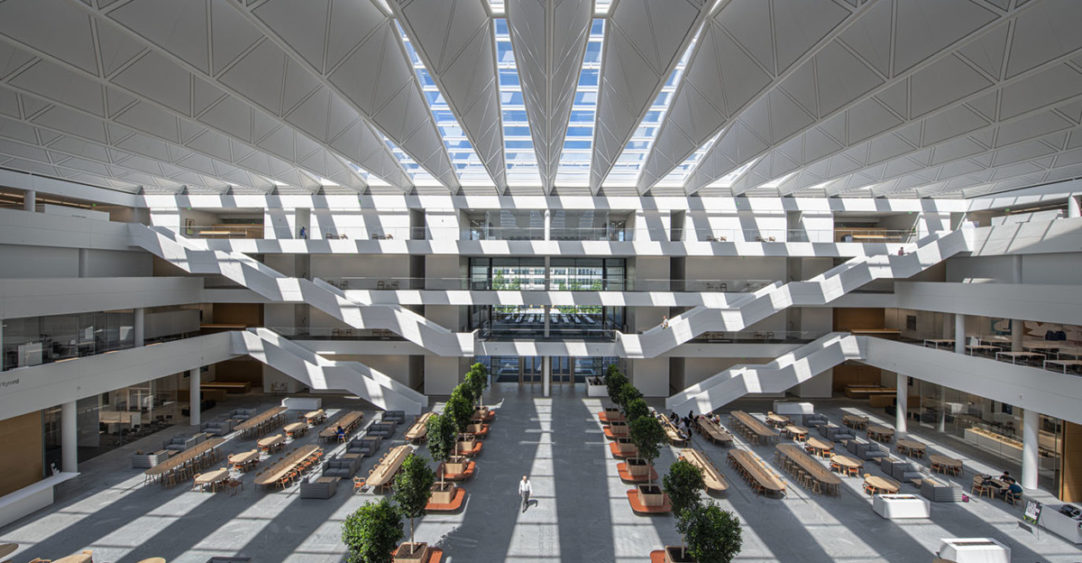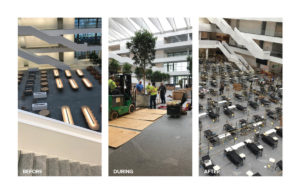
Cleveland Clinic Health Education Campus Transitions to COVID Patient Surge Overflow Facility
In preparation for an anticipated surge in a COVID-driven patient population, Cleveland Clinic made the decision to convert the recently completed Health Education Campus into a 1,000-bed surge facility. Having served as Engineer of Record for the original project, SSR teamed with other design professionals and the contracting team to collaborate on identifying the best solutions that could be completed within an overall 21-day turnaround period. The primary challenge was how to convert a facility conceived and designed for education purposes into a health facility, without leaving permanent scars on what is a showcase facility. The original concept was for the facility to house step-down and mostly non-COVID patients, but as strategy evolved it became clear the facility would need to accommodate COVID-positive patients as well. The plan included segregated patient populations with the highest acuity and least mobile patients receiving care on the lower floors.

The work included an intense coordination effort with the construction manager and major trade contractors to take scope concepts and execute fabrication and installation. The decision was made to provide backup emergency power to the entire facility rather than pick and choose individual loads, mostly due to speed of execution and ease of eventually restoring the facility to its original condition. The HVAC system was evaluated to verify that the quantity of supply was sufficient to meet the cooling load of additional people and equipment. In some cases, adjustments to airflow was required. Additionally, some control system programming adjustments were suggested to help the air handling units meet the increased internal loads.
The work also included coordinating with the contractors to determine how to install additional handwash sinks within the building. The local codes department insisted on the contractors obtaining a permit if additional plumbing fixtures were hard piped into the sanitary system. Cleveland Clinic considered portable self-contained sinks, but chose to avoid that option based on the labor required to manually fill and drain the portable tanks. SSR identified how sinks could be connected to the water system and the drains could be pumped to indirect drains, avoiding the time required to obtain a permit and still providing a solution that required less maintenance.

